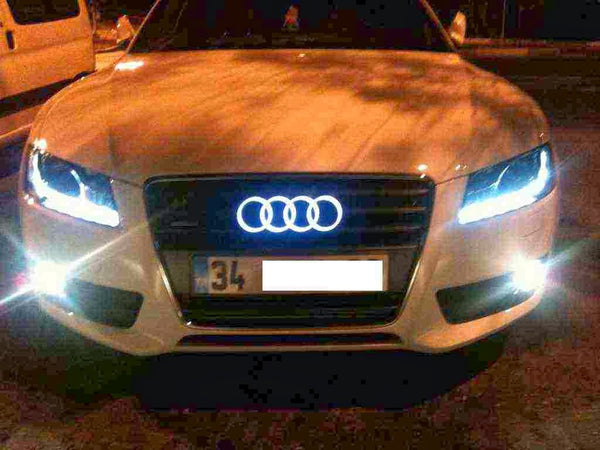
At 15 volts, we pull exactly 1 amp and dissipate 15 watts:ġ5 volts / 15 ohms = 1 amp x 15 volts = 15 watts In my setup, I chose a 15 ohm resistor rated at 50 watts. This is, in my opinion, not a good idea (sorry Nick!). At 15 volts, that’s almost 38 watts, which is more than the resistor is rated for in ideal conditions:ġ5 volts / 6 ohms = 2.5 amps x 15 volts = 37.5 watts It’s scary that a lot of people seem to be using 6 ohm 25 watt resistors for this. Assuming you’re not going to mount it on an ideal heatsink, AND assuming you’re going to mount it near a hot high-performance engine, AND expect to drive in the summer, the red zone is not where you want to be.Įven a 50 watt 8 ohm resistor is cutting it too close, in my opinion, given the environment. Also, these wire-wound resistors are only rated at the stamped power when mounted on a substantial metal heatsink (check your datasheet). However, that would be running the resistor in the red zone all the time. Now, they make 8 ohm resistors that are rated at 25 watts, and we could use one. If we wanted to pick a resistor that would consume 1.73 amps at 15 volts, we’d need an 8.6 ohm resistor:

At 15 volts (the maximum you’d expect from your alternator when the car is running), that’s 1.73 amps:

The original bulb for the DRLs in this car is an 1156, which is a 26 watt bulb. That will get about as hot as a regular bulb does when it’s on, which means that it’s going to get pretty hot. So, we need to select a resistor to put in parallel with each bulb that will draw (and waste) enough power to fool the monitoring circuit.
2007 AUDI A4 LED BADGE DRIVER
Most times, the LED works fine, but the car incessantly warns the driver of the problem. When you replace such a bulb with an LED, it draws so little power compared to the original that the circuit monitor thinks the bulb is burned out. It does this by making sure that, when activated, the bulb draws a reasonable amount of current, commensurate with a properly-sized and working incandescent bulb. Most seem to ignore a couple of the important details about doing this, namely how and where to mount the resistors safely, as well as the proper sizing and power dissipation calculations required to select them.Īs some background, modern fancy cars monitor the circuit of each safety-related light bulb so that it can indicate to the driver when one burns out. It was Nick’s that made me decide to do the actual conversion, and part of the reason why I decided to add yet-another-writeup to the internet’s large collection of them. Thanks: Rich and Marcel at OEMplus ( oemplus.There is no shortage of writeups online about converting a B7’s ugly yellow daytime running lights to LEDs.

Interior: S4 Recaro heated seats with Memory Seat retrofit, TT RS steering wheel, RS4 center console with push button start, RS4 handbrake, pedal set, shift boot with white stitching, factory cool box, LED lighting, Ibis white trim, Euro stickerless sunvisorsĪudio/Visual: RNS-E navigation, Alpine KCE-425i interface, Boss HDTV tuner

2007 AUDI A4 LED BADGE MOD
Wheels & Tires: 20x9" Rotiform BLQ wheels with 235/30 R20 Hankook Ventus V12 Evo tires, OE tire pressure monitor systemĮxterior: Euro front and rear bumpers with park distance control and Seat Cupra R front splitter, Euro aspherical mirrors and wrapped caps, white badges and RS4 grille surround, Joey Mod headlight housings, E36 LED angel-eyes, HID foglights, Euro smoked tail lights, vinyl-wrapped titanium trim, black painted roof and lower diffuser Suspension: Tein Super Sport coilovers, RS4 sway bars front and rear Engine: 2.0L four-cylinder 16v FSI with Revo Technik stage 2+ software, AWE fuel pump, Milltek race cats and 2.75" Sport exhaust, Evolution Racewerks side-mount intercoolers, Snow Performance methanol injectionīrakes: 330mm drilled and slotted Adam’s Rotors, stainless steel lines


 0 kommentar(er)
0 kommentar(er)
